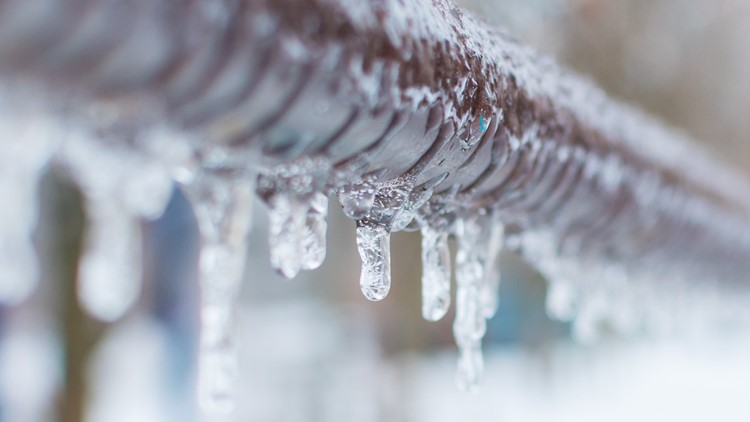Ways to Defend Your Pipes from Cold Weather: Expert Tips
Ways to Defend Your Pipes from Cold Weather: Expert Tips
Blog Article
This post underneath in relation to How to prepare your home plumbing for winter weather is really attention-grabbing. Give it a try and make your own assumptions.

Cold weather can ruin your pipes, especially by freezing pipes. Here's how to avoid it from occurring and what to do if it does.
Introduction
As temperature levels decline, the threat of frozen pipes increases, potentially bring about costly repairs and water damages. Recognizing exactly how to stop icy pipelines is essential for home owners in cold climates.
Prevention Tips
Protecting susceptible pipes
Cover pipes in insulation sleeves or make use of heat tape to protect them from freezing temperatures. Focus on pipelines in unheated or external areas of the home.
Home heating strategies
Keep indoor areas properly heated up, especially locations with pipes. Open up closet doors to allow warm air to circulate around pipelines under sinks.
How to identify icy pipes
Search for reduced water flow from faucets, uncommon smells or noises from pipelines, and visible frost on subjected pipes.
Long-Term Solutions
Architectural adjustments
Consider rerouting pipes far from outside wall surfaces or unheated locations. Add extra insulation to attics, basements, and crawl spaces.
Updating insulation
Buy premium insulation for pipes, attic rooms, and walls. Correct insulation aids maintain consistent temperatures and lowers the risk of frozen pipes.
Securing Outside Pipes
Yard tubes and exterior taps
Separate and drain garden tubes prior to winter months. Install frost-proof spigots or cover exterior faucets with protected caps.
Understanding Frozen Pipelines
What creates pipes to ice up?
Pipes ice up when subjected to temperatures listed below 32 ° F (0 ° C) for extended periods. As water inside the pipelines freezes, it expands, taxing the pipe wall surfaces and possibly creating them to burst.
Dangers and problems
Frozen pipelines can lead to water system interruptions, residential property damage, and costly repairs. Ruptured pipes can flood homes and trigger comprehensive architectural damage.
Signs of Frozen Water Lines
Recognizing frozen pipelines early can avoid them from bursting.
What to Do If Your Pipes Freeze
Immediate activities to take
If you believe icy pipelines, maintain faucets open to eliminate stress as the ice thaws. Utilize a hairdryer or towels taken in warm water to thaw pipes gradually.
Verdict
Protecting against icy pipelines needs positive steps and quick responses. By comprehending the causes, indicators, and safety nets, property owners can secure their plumbing during winter.
6 Proven Ways to Prevent Frozen Pipes and Protect Your Home
Disconnect and Drain Garden Hoses
Before winter arrives, start by disconnecting your garden hoses and draining any remaining water. Close the shut-off valves that supply outdoor hose bibs and leave the outdoor faucet open to allow any residual water to drain. For extra protection, consider using faucet covers throughout the colder months. It’s also important to drain water from any sprinkler supply lines following the manufacturer’s directions.
Insulate Exposed Pipes
Insulating your pipes is an effective way to prevent freezing. Pipe insulation is readily available at home improvement stores and is relatively inexpensive. Pay close attention to pipes in unheated areas such as the attic, basement, crawl spaces, or garage. Apply foam insulation generously to create a buffer against the cold. You can also wrap your pipes in heat tape or thermostat-controlled heat cables for added warmth.
Seal Air Leaks
Inspect your home for any cracks or openings that could let in cold air. Seal any holes around the piping in interior or exterior walls, as well as the sill plates where your home rests on its foundation. Additionally, make sure to keep your garage door closed unless you’re entering or exiting. Leaving it open creates a significant air leak that can lead to frozen pipes.
Allow Warm Air Circulation
During cold snaps, it’s essential to allow warm air to circulate evenly throughout your home. Leave interior doors ajar to promote better airflow. Open kitchen and bathroom cabinets to help distribute heat consistently around the rooms. If you have small children or pets, be sure to remove any household chemicals or potentially harmful cleaners from open cabinets for safety.
Let Faucets Drip
A small trickle of water can make a big difference in preventing ice formation inside your pipes. When temperatures drop significantly, start a drip of water from all faucets served by exposed pipes. This continuous flow helps prevent the water from freezing. Additionally, running a few faucets slightly can relieve pressure inside the pipes, reducing the chances of a rupture if the water inside does freeze.
https://choateshvac.com/6-proven-ways-to-prevent-frozen-pipes-and-protect-your-home/

I have been very inquisitive about 6 Ways to Prevent Frozen Pipes and I hope you enjoyed my blog post. So long as you enjoyed reading our blog posting if you please make sure you remember to pass it around. We value your readership.
Explore Now Report this page